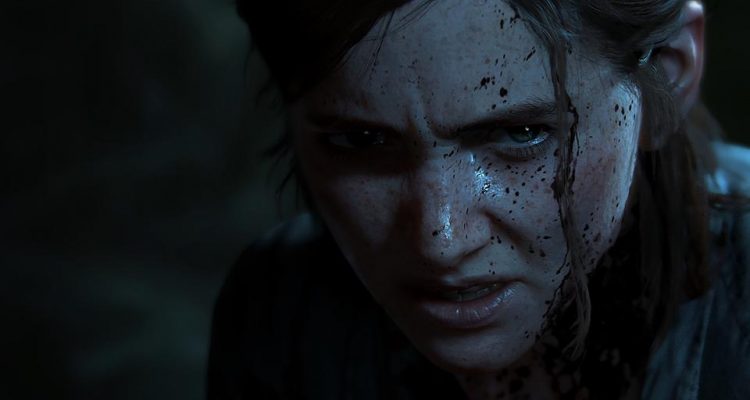This year has been rough for entertainment. It has been a brutal and tragic year for the whole world battling the COVID-19 pandemic, but what makes the struggle even greater is that there is a minimal supply of new media being released, whether it be movies, T.V. shows or video games.
For the most part, the new movies and shows being released on Netflix, Disney+ and other streaming platforms haven’t been the best in terms of quality; they are largely lackluster originals or movies that were deemed by the studios as not worth releasing in theaters.
So, what if I told you that the best and most important piece of media of the year thus far was a video game? A sequel seven years in the making to a beloved masterpiece. A game that gained critical acclaim from hundreds of publications, but was trashed by players all over the world before it was even released. Of course, the game I am talking about, which I believe is not only one of the best pieces of storytelling all year, but one of the best games of all time, is “The Last of Us Part II.”
It’s been almost four months since the release of “The Last of Us Part II,” and there hasn’t been a day that has gone by that I haven’t thought about its characters, storytelling complexity and brutal gameplay. The world of the game is extremely dense, detailed and depressing. It seems strange that a game like this would feel so powerful when it feels like we’re experiencing the game’s grim world in our own reality. It’s only a coincidence that we are battling COVID-19 when the sequel to a game about finding a cure for a zombie-creating virus is finally released.
The characters and story of “The Last of Us Part II” is where the game really shines. Ellie (Ashley Johnson), the brash and sweet companion to the protagonist, Joel (Troy Baker) in the first game, steps into the spotlight as the main character. She’s grown up a lot since the ending of the original game, so when tragedy befalls her and Joel’s settlement in this post-apocalyptic future, she embarks on a quest of revenge to put to rest the thoughts of the incident.
The game, in the simplest of explanations, is about revenge. Ellie begins her quest filled with rage and determination, only to become more reckless when approaching situations that put her companion and girlfriend, Dina (Shannon Woodward), in danger.
Ellie, a character who won me over with her endearing charm and immature remarks, starts to become the villain of the story given the brutal choices she makes to bring justice. This is illustrated excellently through the way the combat sequences of the game play out. There are several instances where the game will give you a prompt to press a button to beat or kill a member of the enemy faction, but at this point in the story, the player is so fed up with Ellie’s ruthless rampage that they don’t want to press the button. The game makes players feel guilty for the violence that they create, which I think is incredible for a game that has a surface level narrative dealing with the issue of revenge.
However, the game is not all about revenge. In fact, it’s about the complete opposite as well – forgiveness. Throughout the main linear story, there are flashbacks to the settlement that reveal more about the relationship between Ellie and Joel throughout the time after the first game. These scenes are brimming with tension, as Joel wants to become more of a father figure towards Ellie, while Ellie is simultaneously maturing into a young woman. These scenes set the player up for a wipeout final scene that is one of the most marvelously written, performed and well-placed scenes I have ever seen in any visual medium. It contextualizes the entire game to a point that it makes you want to press play all over again and experience the journey one more time.
So, why is “The Last of Us Part II” the most important piece of storytelling in 2020 thus far? On the surface, it may be tough to tell. This game is brutal, depressing, heartbreaking and at times, sickening. It’s definitely a tough play during the current climate of the COVID-19 pandemic, especially because most people are probably looking for a more light-hearted and cheerful escape from the grim world outside their homes.
“The Last of Us Part II” is not that type of escape. For me, the game made me completely forget about the world outside. For the duration of its approximately 25 hour story, I was locked into the world and conflict between its central characters. It’s not a pleasant escape, but I also haven’t been this immersed in a video game in a long time.
The game isn’t without its sunshine though. As I’ve mentioned, the game is a brutal story of revenge with the characters players love taking action that they don’t agree with. That being said, the game leaves some hope for the player at the very end.
No spoilers of course, but the trail of blood that Ellie leaves throughout the game comes to a shocking end, but one that holds a glimmer of light at the end of the dark, bleak tunnel that is “The Last of Us Part II.” The ending allows the player to empathize with Ellie and how she is feeling. Both Ellie and the player are in the same place emotionally at the end of this game – exhausted and ready to move on.
For me, it couldn’t be more similar to how I feel about the world right now, with the looming threat of a second wave. It’ll be a tough journey, but ultimately, there is a glimmer of hope at the end of the tunnel.


Leave a Reply